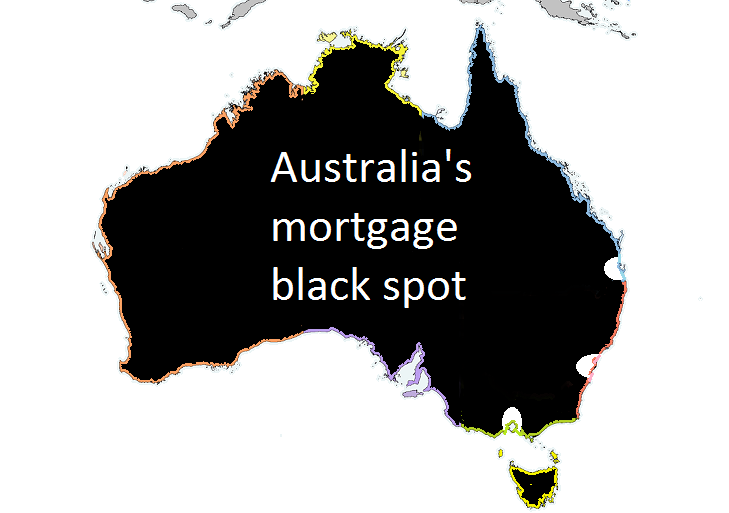From Fairfax:
…In its 40 hotspots, NAB is conducting a more stringent assessment of loan applications, including increasing the amount of equity that borrowers require.
NAB would not disclose what postcodes are on its watchlist. But Martin North, principal at Digital Finance Analytics…said postcodes in NSW that banks would be wary about include Blackville, Caroona, Colly Blue, Pine Ridge, Quirindi, Spring Ridge and Wallabadah (2343) in the state’s north-west and Greta in the Hunter (2334). “The slowing of new resources projects in the Hunter is a driver,” he said. He also pointed to Riverstone (2765), Mount Annan (2567), Auburn (2144), Blaxland (2774), Chipping Norton (2170), Berala (2141) and Bass Hill (2197) as being the highest risk suburbs for defaults in Sydney.
In Melbourne, the postcodes most at risk of default are Aberfeldie, Essendon and Essendon West (3040); Gladstone Park, Gowanbrae and Tullamarine (3043); Pascoe Vale (3044); Belgrave and Tecoma (3160); Mount Evelyn (3796); Endeavour Hills (3802); and Berwick and Harkaway (3806).
How about the rather large Australian suburb west of the Great Dividing Range?

She’ll be right! And from Banking Day:
The credit quality story may not be straightforward in Australian banking, if markers of stress in Westpac’s banking book are anything to go by.
Mortgage stress increased on home loans in Western Australia and Victoria over the June 2015 quarter, Westpac said in a presentation to supplement its “pillar 3” report yesterday.
Home loans in arrears by 90 days or more lifted by two basis points to 49 basis points, with most of the rise in the two states mentioned above.
Arrears of 90 days or more on car loans were also “a little higher,” the bank said.
On business lending, Westpac said “some portfolios experienced a rise in stress including retail, manufacturing and utilities,” with the rise in the last two sectors “isolated to a small number of names.”
It said these trends were “related to pressure in the commodity sector”, although stress indicators on mining loans (a minor product for any bank) reduced.
However, the bank said there was a fall in stress in most portfolios, including commercial property.

